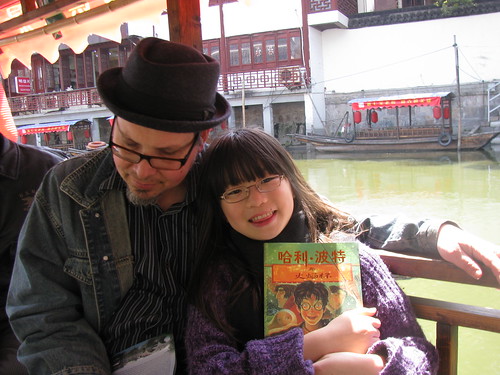🦋 Getting the conversation started
 A couple of observations at semi-random about Saura's CrÃa Cuervos, in the interests of jump-starting the discussion that Richard and Stu are leading on the weekend of July 6 -- a few things that have been running through my head while watching it. A couple of observations at semi-random about Saura's CrÃa Cuervos, in the interests of jump-starting the discussion that Richard and Stu are leading on the weekend of July 6 -- a few things that have been running through my head while watching it.
I am imagining an alternate but parallel reality in which this film is an animated feature rather than live-action, and the artist who created it is Edward Gorey. I'm not sure how to illustrate this, quite,* but Saura's world and Gorey's seem to have quite a bit in common both visually and thematically.†I dig the theme song, "Porque te vas" by Jeanette (and see also this cover, by Pato Fu), while thinking that some of its appeal for me lies in its foreignness, that if it were an American song I might well find it bland and unlistenable. Am I wrong in thinking Geraldine Chaplin played several parts? Looking at the Criterion page... It only lists her as playing Ana's mother ('s ghost); but I thought that she was also playing the character of Ana herself as an adult, in soliloquies and voice-overs. The movie's title, "Bring up ravens" (or perhaps "Raise ravens" is better, or even "Keep ravens"?) comes from the proverb "CrÃa cuervos, y te sacarán los ojos"-- "Raise ravens, and they will pluck out your eyes." Thinking of Ana and her sisters as "ravens," as malevolent, is not quite clicking for me. Perhaps it will work better to think of this expression as showing how the adults in the film are thinking of the kids, rather than as a statement about the reality of the film. A parallel English-language construction might be to title the movie "Sharper than a serpent's tooth."‡ One other thing, is this about ravens perhaps what was being signified by the plate full of chicken feet that was in the refrigerator every time Ana opened it? Having the pet guinea pig die near the end of the film seemed a bit like overkill -- that whole scene (and the burial, natch) could have been chopped from the movie without losing much, I think. (It makes Roni into more of a narrative device, a Chekhovian gun, than a full character, which is how I had been seeing him earlier in the movie.) Speaking of scenes, the one about 15 minutes in, where Ana sees herself jumping, has got to rank pretty high on the index of emotionally overwhelming scenes in movies. Her character made me think a bit of Oskar in The Tin Drum. (Come to think of it, another movie for which parallel-universe Gorey might well be a good pick as animator.) Ana Torrent's other movies are going right onto my Netflix queue, starting with El espÃritu de la colmena.
 *And yet it seems to me that the interaction between the young Ana and Nicolas in the beginning of the trailer makes as good an illustration of that as anything. †This suggests what might be a fun game, imagining which artist would animate which various live-action movies... Ghostbusters (perhaps cheating, this movie is very nearly animated already) suggests maybe, I don't know, Miyazaki? And Treasure of the Sierra Madre would of course go to Warner Bros. -- I think indeed that this may have already happened... Can very easily picture Bugs saying to Elmer, "Eh... We don't need no stinkin' badges, Doc!" ‡And looking at imdb, I am feeling amazed that this title has never yet been used for a movie...
posted evening of Saturday, June 16th, 2012
➳ More posts about Cría Cuervos
➳ More posts about The Movies

Jeremy, sorry for not making it over to this post until now. You have many interesting things to say about one of my favorite movies! I do think that Saura intended the "crÃa cuervos" proverb to be applied to the three kids in the movie, though, not because they are malevolent but as a warning that Spain's future will not be bright if its youth are raised in the repressive environment found in the film. Interpreting it this way (rightly or wrongly), I find the ending of the movie incredibly powerful: these emotionally messed-up kids are being let loose on a society that has practically bred them to react in the manner anticipated by the proverb. Anyway, hope to hear more about how much you enjoyed the film or not; my post is finally up, and I will link to this post here as soon as I sign off. Until then, thanks for getting the ball rolling so to speak!
posted morning of July 7th, 2012 by Richard
| 







